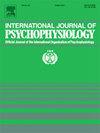急性作战应激和被动热应激对军人生理和主观应激反应的影响。
IF 2.5
3区 心理学
Q3 NEUROSCIENCES
引用次数: 0
摘要
军事人员经常遇到可能引发急性压力的情况,这可能会影响行动表现。因此,在受控环境中检查应激反应以获得对急性应激影响性能的更多见解是很重要的。本研究在受控环境下研究了被动热暴露结合虚拟战斗场景对心血管和心理生理参数的影响。68名健康的军人被随机分为低压力组和高压力组。两个小组都参与了两个虚拟战斗场景。压力小的组,但是,经历了热中性的条件下测试(MTemp = 22.4 °C, MRelativeHumidity = 41.4 %)而高压力集团被暴露在被动热暴露(MTemp = 35.9 °C, MRelativeHumidity = 66.4 %)使用便携式环境设施。虽然虚拟战斗场景单独导致心率变异性(HRV)的降低而不影响心率(HR),但被动热暴露的增加引发了更明显的生理应激反应,其特征是在高应激条件下显着提高HR和降低HRV。然而,在不同的条件下,呼吸频率、唾液皮质醇或α -淀粉酶水平没有明显的变化,这表明下丘脑-垂体-肾上腺或交感神经-肾上腺-髓质轴都没有激活。此外,主观压力和焦虑得分在不同条件下没有差异,强调了观察到的变化的生理性质。因此,生理反应可能是一种热反应,而不是急性应激反应。这些发现强调了将环境压力因素纳入军事训练协议的重要性,以提高现实性并使人员做好应对作战压力因素的准备。然而,观察到的轻微反应表明,更高的环境温度和更长的暴露时间可能需要唤起更强大的应激反应,以进行有效的应激接种训练。本文章由计算机程序翻译,如有差异,请以英文原文为准。
The effects of acute operational stress and passive heat stress on physiological and subjective stress responses in military personnel
Military personnel often encounter situations that can trigger acute stress, which may affect operational performance. Therefore, it is important to examine stress responses in controlled environments to obtain more insights in performance-influencing effects of acute stress. This study investigated the impact of passive heat exposure combined with virtual combat scenarios on cardiovascular and psychophysiological parameters in a controlled setting. Sixty-eight healthy servicemembers were randomized into a low-stress or high-stress condition. Both groups engaged in two virtual combat scenarios. The low-stress group, however, underwent testing under thermoneutral conditions (MTemp = 22.4°C, MRelativeHumidity = 41.4%) whereas the high-stress group was exposed to passive heat exposure (MTemp = 35.9°C, MRelativeHumidity = 66.4%) using a portable environmental facility. While virtual combat scenarios alone led to a decrease in heart rate variability (HRV) without affecting heart rate (HR), the addition of passive heat exposure elicited a more pronounced physiological stress response, characterized by significantly higher HR and lower HRV in the high-stress condition. However, no significant changes were observed in respiratory rate, salivary cortisol, or alpha-amylase levels across the conditions, suggesting that there was no activation of either the hypothalamic-pituitary-adrenal or the sympathetic-adrenal-medullary axis. Furthermore, subjective stress and anxiety scores did not differ between conditions, underscoring the physiological nature of the observed changes. Resultantly, the physiological response was likely a thermal reaction rather than an acute stress response. These findings highlight the importance of incorporating environmental stressors into military training protocols to enhance realism and prepare personnel for operational stressors. However, the mild response observed suggests that higher ambient temperatures and longer exposure times may be necessary to evoke a more robust stress response for effective stress inoculation training.
求助全文
通过发布文献求助,成功后即可免费获取论文全文。
去求助
来源期刊
CiteScore
5.40
自引率
10.00%
发文量
177
审稿时长
3-8 weeks
期刊介绍:
The International Journal of Psychophysiology is the official journal of the International Organization of Psychophysiology, and provides a respected forum for the publication of high quality original contributions on all aspects of psychophysiology. The journal is interdisciplinary and aims to integrate the neurosciences and behavioral sciences. Empirical, theoretical, and review articles are encouraged in the following areas:
• Cerebral psychophysiology: including functional brain mapping and neuroimaging with Event-Related Potentials (ERPs), Positron Emission Tomography (PET), Functional Magnetic Resonance Imaging (fMRI) and Electroencephalographic studies.
• Autonomic functions: including bilateral electrodermal activity, pupillometry and blood volume changes.
• Cardiovascular Psychophysiology:including studies of blood pressure, cardiac functioning and respiration.
• Somatic psychophysiology: including muscle activity, eye movements and eye blinks.

 求助内容:
求助内容: 应助结果提醒方式:
应助结果提醒方式:


